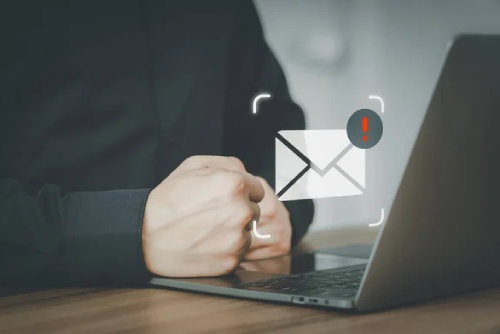Why DMARC Reports Are Essential For Email Security
And How To Use Them
And How To Use Them
In the current digital environment, email remains a prevalent communication tool for companies, yet it is also frequently targeted by cybercriminals. Tactics such as phishing, email spoofing, and spam illustrate how these malicious individuals can exploit email to gain access to confidential data. To enhance email security and protect business domains, the DMARC protocol has emerged as a crucial resource.
This article will explore the importance of DMARC reports for enhancing email security and provide insights on how companies can utilize them to safeguard against threats originating from email.
Understanding DMARC and Its Role in Email Security
DMARC is a protocol designed to authenticate emails, aiming to thwart fraudulent practices such as email spoofing and phishing. It operates in conjunction with two other essential protocols: SPF and DKIM. When combined, these three protocols verify the authenticity of emails sent from a domain, ensuring they are not forged by malicious individuals.
DMARC provides domain owners the ability to dictate the handling of their emails when they do not pass SPF or DKIM validations.
How DMARC Reports Work
DMARC reports are essential for understanding the treatment of your domain's emails on the internet. They give a comprehensive overview of how well SPF and DKIM validations are performing, indicating whether emails originating from your domain successfully meet these authentication standards or not. There are primarily two categories of DMARC reports:
- Aggregate Reports (RUA): These reports summarize the outcomes of email authentication processes, giving domain owners a broad perspective on their email security status.
- Forensic Reports (RUF): In contrast, these reports offer a granular analysis of specific email failures. They assist domain owners in pinpointing exact cases where an email was marked as potentially harmful.
Consistently analyzing these reports enables companies to pinpoint weaknesses and enhance their email security measures.

Why DMARC Reports Are Crucial for Email Security
Protection Against Phishing and Spoofing Attacks
A key function of DMARC is to stop cyber criminals from impersonating your domain and distributing deceptive emails that seem to originate from your company. By implementing stringent authentication protocols through DMARC, organizations can minimize the chances of their domain being exploited in phishing attacks.
Improve Email Deliverability
An appropriately set up DMARC record provides a defense against email spoofing while also improving the chances of successful email delivery. It guarantees that authentic emails are verified and can bypass spam filters, increasing the likelihood that your messages will reach their target audience.
Monitor and Maintain Compliance
In sectors that handle confidential information, like finance and healthcare, adhering to regulations is crucial. DMARC assists organizations in aligning with industry standards and email security best practices. By consistently reviewing DMARC reports, companies can verify their compliance with email security mandates and make necessary adjustments when needed.
Identify Potential Security Vulnerabilities
DMARC reports offer crucial insights into potential weaknesses in your email security. For example, if authentic emails are not passing DMARC validations, it may suggest that there are errors in the SPF or DKIM settings. Analyzing these reports allows companies to identify and fix problems proactively, preventing them from escalating into significant security threats. Explore this webpage to find additional details.
How to Use DMARC Reports Effectively
Set Up DMARC Reporting
To begin with, make sure that DMARC reporting is activated for your domain. This involves including a DMARC record in your DNS configuration, which indicates the destinations for both aggregate and forensic reports. Usually, these reports are directed to an email linked to the domain.
Monitor Aggregate Reports Regularly
To utilize DMARC reports effectively, begin by consistently reviewing aggregate reports. These documents provide an overview of your email authentication performance. By tracking changes over time, you can easily identify any problems or areas for enhancement.

Review Forensic Reports for Specific Failures
Forensic reports offer comprehensive insights into the failures of specific emails. They are essential for diagnosing particular problems. When an email does not pass authentication, these reports can pinpoint whether the cause is related to SPF, DKIM, or some other configuration error.
Take Corrective Action Based on Findings
After examining the reports, implement any necessary corrections. This could involve modifying your SPF or DKIM records, fine-tuning your DMARC policy settings, or contacting third-party services that are sending emails using your domain.
Gradually Increase DMARC Policy Enforcement
After verifying that your email authentication functions correctly, you can progressively raise the enforcement level of your DMARC policy. Begin with a "none" setting to observe the reports, and as you become more assured of your email security, transition to "quarantine" or "reject."